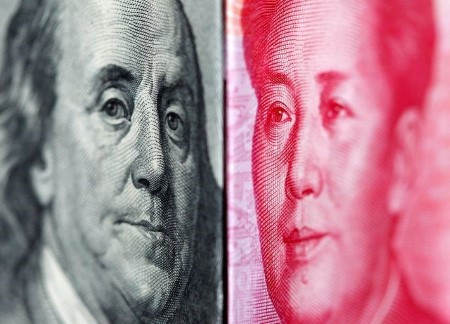




Quarterly Economic Growth Release: More BSP cuts to come
 DOWNLOAD
DOWNLOAD

Monthly Economic Update: Fed catches up
 DOWNLOAD
DOWNLOAD

Inflation Update: Steady and mellow
 DOWNLOAD
DOWNLOAD


Dollar in demand as growth outlook darkens, yuan up as China eases curbs

SINGAPORE, Dec 7 (Reuters) – The dollar crept higher on Wednesday as some of the biggest US banks warned of an impending recession, which dampened appetite for riskier assets and kept the greenback in demand.
Top bankers from JPMorgan Chase & Co, Bank of America and Goldman Sachs said overnight that the banks are bracing for a worsening economy next year, as inflation and high interest rates cuts into consumer demand.
Against the dollar, sterling was last 0.03% lower at USD 1.2131, after falling 0.4% overnight.
The greenback rose 0.2% against the Japanese yen to 137.30 yen, following a 0.16% overnight gain.
“We’ve been forecasting a recession in the US, the UK, the euro zone and Japan … It’s part of our baseline,” said Joseph Capurso, head of international and sustainable economics at Commonwealth Bank of Australia.
“(That) will provide more support to the US dollar, as a safe-haven currency.”
Against a basket of currencies, the US dollar index edged 0.07% higher to 105.62.
It had risen nearly 0.3% overnight, extending a brief rally for a second straight session after upbeat US services and factory data released at the start of the week pointed to underlying momentum in the world’s largest economy.
This supported the view that while the Federal Reserve may scale back the pace of its rate hikes, US rates will remain higher for longer.
Elsewhere, the euro was last 0.08% lower at USD 1.0465.
Two European Central Bank (ECB) officials had signalled that inflation and rates may be close to peaking, ahead of the ECB’s monetary policy meeting next week.
The Aussie gained 0.19% to USD 0.6701, after a muted reaction to data which showed that Australia’s economy slowed a little in the September quarter.
The antipodean currency remained buoyed by a hawkish stance from the Reserve Bank of Australia, which on Tuesday signalled more rate hikes ahead to cool inflation, after it lifted its cash rate by 25 basis points to a 10-year high.
The kiwi rose 0.13% to USD 0.6326.
In Asia, China’s yuan firmed as the government announced a slew of measures that marked a sharp change to its tough, three-year-old zero-COVID policy that has battered its economy and sparked historic protests.
China’s national health authority said that asymptomatic COVID-19 cases and those with mild symptoms can self-treat while in quarantine at home.
While some of the changes echoed similar shifts made by other countries many months ago, the announcement was the strongest sign so far that China is preparing its people to live with the disease, though analysts say the path to fully reopening the economy will be long and bumpy, and not without risk.
The onshore yuan was last more than 0.2% higher at 6.9771 per dollar.
“These are follow-up measures and reinforce the fact that China is taking calibrated steps in the direction of reopening,” said Christopher Wong, a currency strategist at OCBC.
“Anticipation of further easing of measures in China should continue to favor RMB (and) RMB-linked assets.”
The optimism over further easing of China’s strict COVID-19 restrictions outweighed its dismal trade data released earlier in the day, which showed that the country’s exports and imports shrank at a much steeper-than-expected pace in November, as a result of feeble global and domestic demand, COVID-induced production disruptions and a property slump at home.
(Reporting by Rae Wee; Editing by Sam Holmes and Kim Coghill)
This article originally appeared on reuters.com





 By Reuters
By Reuters